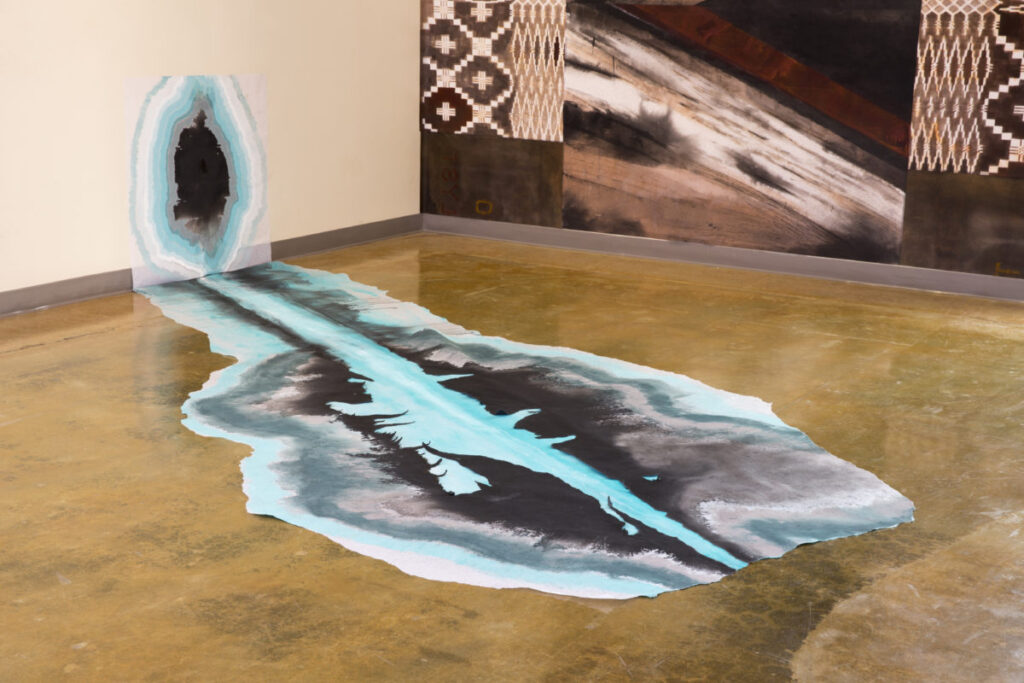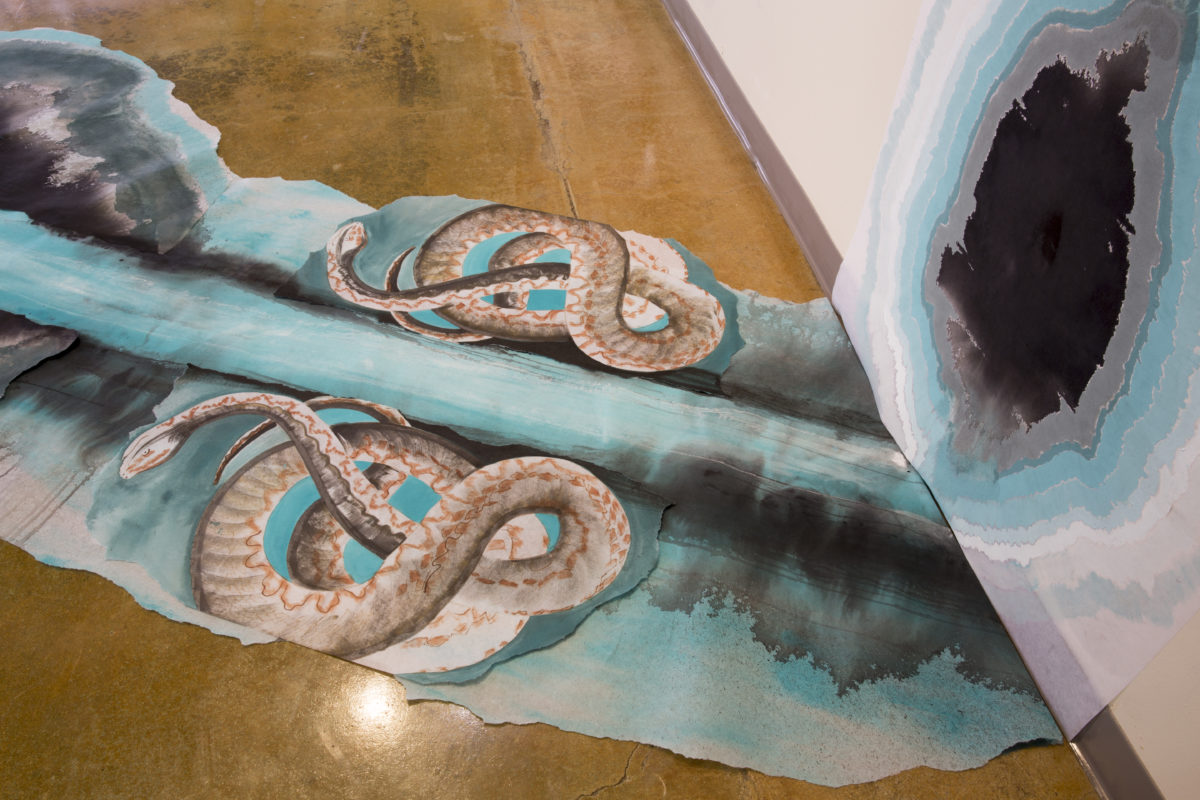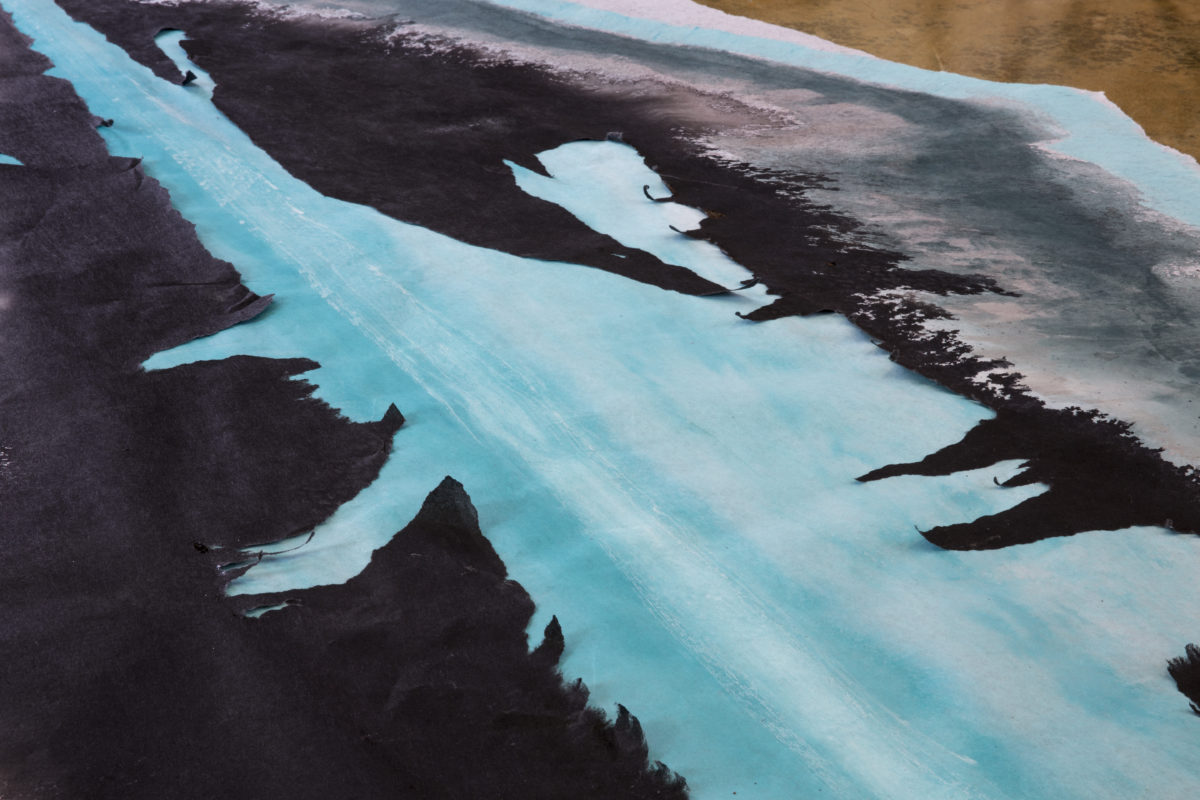
Jeanne Lorenz, a resident of California and a professor of art at Solano Community College, spent her sabbatical in 2015 hiking portions of the Pacific Crest Trail (PCT)—a nearly 3,000-mile route stretching from the U.S.-Mexican border north to British Columbia. Lorenz’s journey inspired a series of site-specific installations called PCT Trans/ Regression. Here, she talks about the experience and what she hopes to accomplish through the series.
“When I was awarded a sabbatical from my teaching job, I wasn’t sure what I was going to do. I am a mother, and I had been spending a month at least during each summer walking over 230 miles with my daughter and husband. So when I got the sabbatical, my daughter said, ‘We’re going to hike the PCT!’ That wasn’t something I ever thought I would do, but we decided it was a good time in our lives to try it. We hiked 3,000 miles of the PCT, ending at the Washington State border. I’m a lightweight hiker—the base weight of what I was carrying was about 20 pounds. That doesn’t leave a lot of room for art supplies. One of my students gave me a fountain pen that’s a Japanese brush pen. The only supplies I took were this pen and a Moleskine the size of my phone. When you’re long-distance hiking, you’re trying to hike about 20 miles a day. So when I saw something amazing, it’s not like I could sit down and capture what was in front of me. I would sketch during lunch breaks or when we were crossing a canyon.
I tried to turn the small drawings into larger works. PCT Trans/ Regression started from a trail drawing of something I had seen over and over again on the trail. In 2015, California was in the longest drought in over 150 years. Because there wasn’t a lot of snow in the Sierra, there were points on the trail where there was no seasonal water—one stretch of trail that was about 40 miles long had no water. There would be these empty lakebeds from California to Oregon, so I would draw in the moment or take photographs from my phone. That’s how the work evolved.
I’m hoping to use my series to start a conversation about the changing climate. The first time I remember seeing something that I could comfortably link to climate change was in 2013. I saw star thistles—an invasive species that we have near our house—off the trail high above Lake Tahoe. To see it in the wilderness at a high altitude was freakish. California’s landscape is changing. We know that. Even now, I can see smoke from the fires that have been burning all summer in this state.”



